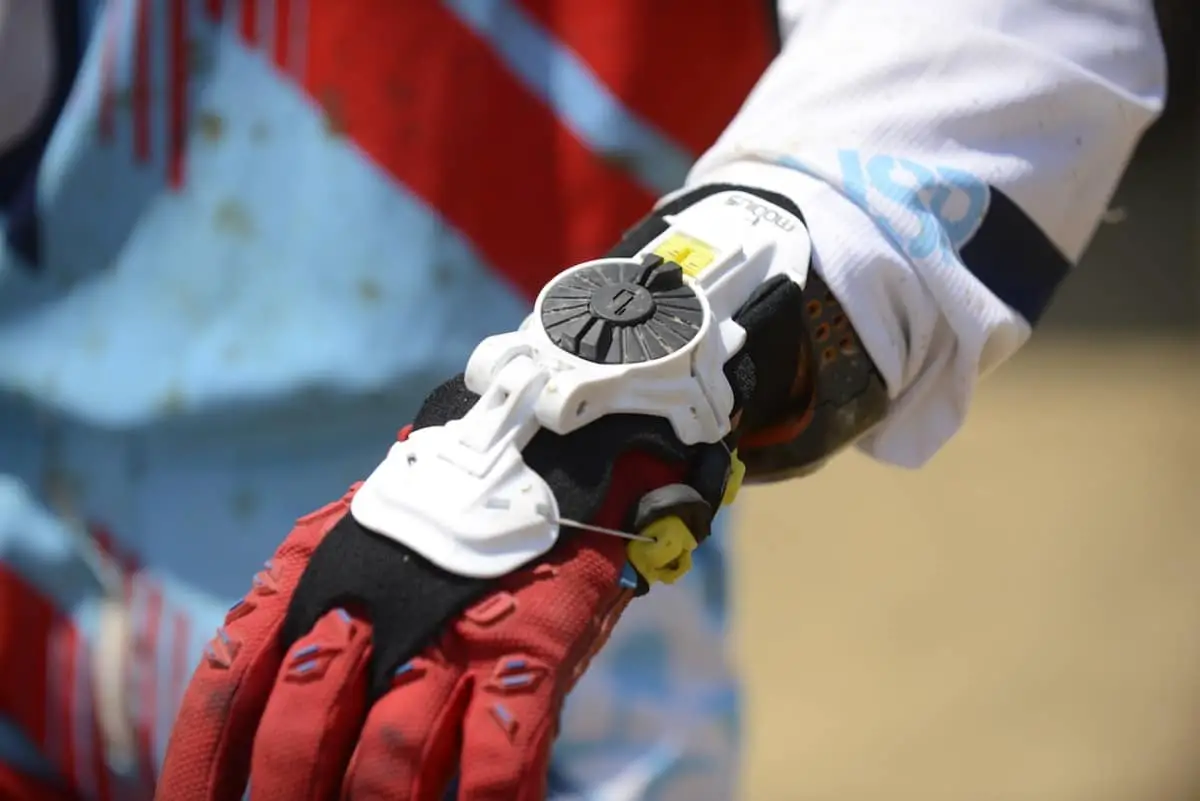MXA TEAM TESTED: MOBIUS X8 WRIST BRACE
WHAT IS IT? The Mobius wrist brace is used by many of the biggest names in the sport, most notably Ken Roczen. It effectively limits the range of motion for riders who have suffered wrist injuries or wrist fusions, riders who have range-of-motion issues from being in a cast for months, or those who have any of a wide range of injuries that require some limit on the vertical flexion of the wrist joint.
WHAT’S IT COST? $199.95.
CONTACT? www.mobiusbrace.com.
WHAT STANDS OUT? Here’s a list of things that stand out with the Mobius X8 wrist brace.
(1) Basics. Think of the Mobius X8 wrist brace as a knee brace for your wrist, with your forearm, wrist and hand functioning as your knee, knee joint and lower leg. Much like a knee brace, the Mobius wrist brace has an extension stop that can be adjusted from 10 to 70 degrees of motion by turning an Allen screw, just as you can put extension stops in a knee brace to stop hyperextension. The brace is attached to the hand by three restraints. The middle finger of your hand is inserted through a neoprene loop. Your forearm is secured by a Velcro strap, and, as with the Mobius knee brace, the X8 wrist brace is tightened down by turning a figure-eight-style Boa (or continuous cable routing system). When you turn the dial on top of the wrist brace clockwise, the cable pulls a molded rubber strap upwards to tighten the brace as much as you like. Since nothing is in the palm of your hand, there is no bunching up.
(2) Fitment. The Mobius wrist brace does not come in left and right versions. Every Mobius brace is designed to work on either hand—and it fits over your glove. The Mobius X8 wrist brace comes in two sizes: small (for wrists that are under 2.5 inches wide) and medium/large (for wrists that are 2.5 inches to 3 inches wide). The extension stop is best adjusted when the brace is off your wrist. It controls how much upward movement your hand has (by turning the screw in the hinge with the supplied Allen wrench). Although some test riders thought you adjusted the range of motion on both sides of the hinge, it is only adjustable from the front of the hinge. Turning the screw clockwise lessens the wrist brace’s ability to move upward. Depending on the extent of your wrist injury, you may want to start by limiting the motion as much as possible to avoid tweaking your wrist upward. Most important, you want the hinge to be located next to the axis of your wrist. This can be adjusted by peeling off the neoprene liner from its Velcro tabs and moving it fore or aft to reposition it until the hinge lines up over the wrist joint. Expect the wrist brace to feel awkward at first; but, once you start riding with it, the brace will find its own center and become almost natural (as natural as something that stops your hand from bending upward can).
WHAT’S THE SQUAWK? We had several test riders who had suffered wrist or forearm injuries ride in the brace. Within a few test rides, they quickly found the setting that worked best for them. Remember to err on the side of caution, since an injured wrist that bends too far is worse than one that doesn’t bend enough. You may have to make adjustments to your arm position, which you have probably noticed Ken Roczen has done with his left arm. Our only real technical complaint is that it is very difficult to get the wrist strap to thread through the plastic brace, especially with gloves on.
MXA RATING: A wrist injury needs protection, whether you are waiting for it to heal or stuck with it for life. The Mobius X8 is a clean design that does its job with a minimum of fuss or bulk. It is the best wrist brace we have ever tried for a rider who wants to keep riding even though his wrist won’t cooperate. We think that this is the best solution—and so does Ken Roczen.






Comments are closed.